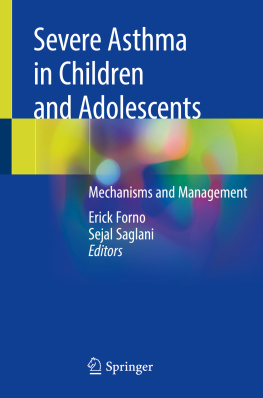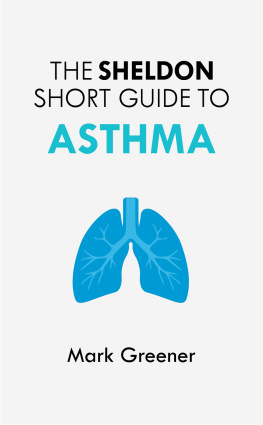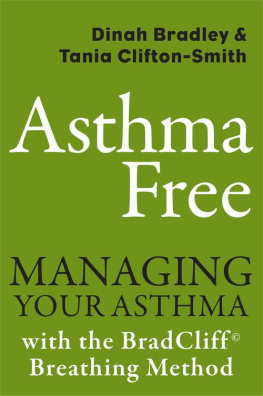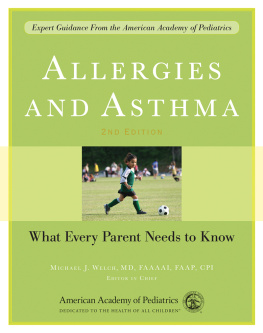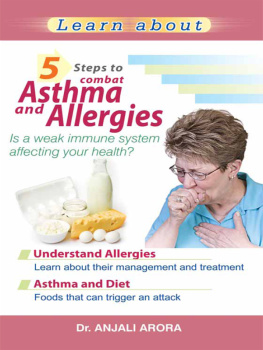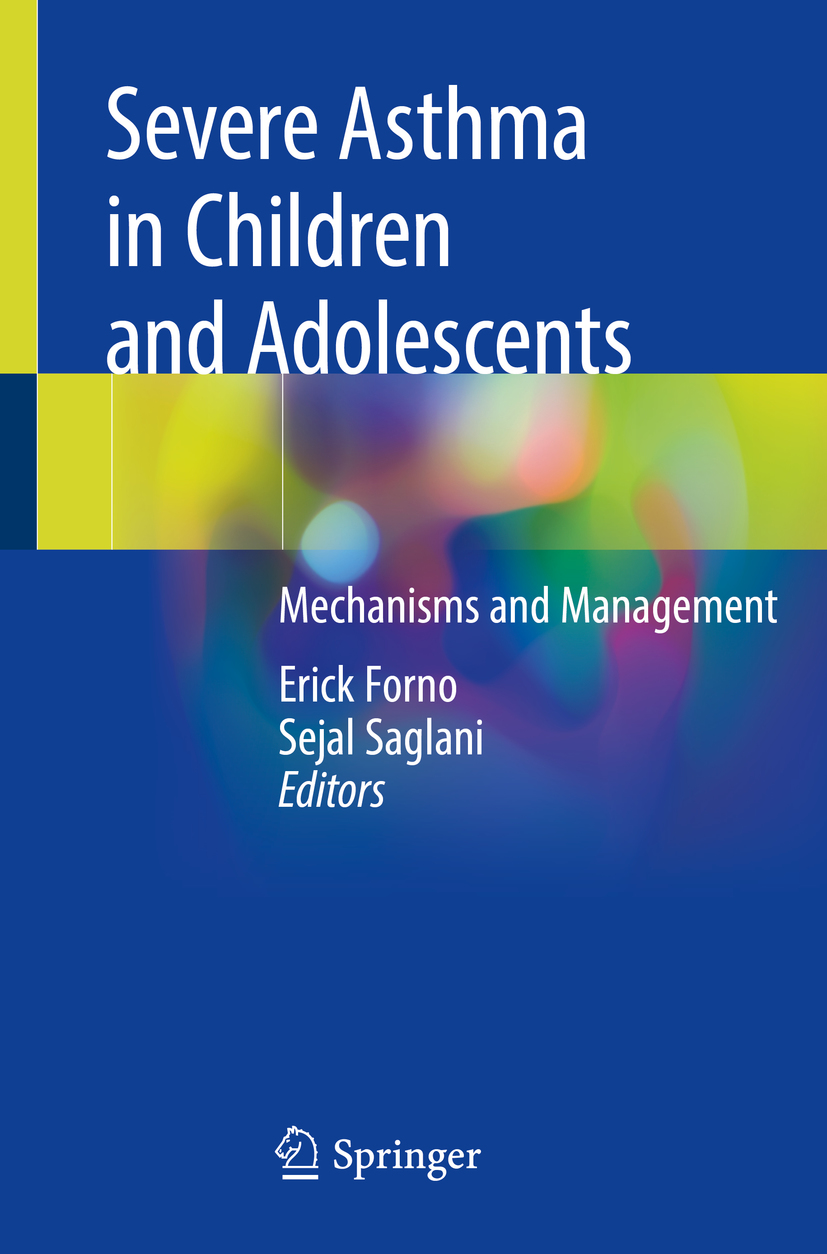Editors
Erick Forno
Childrens Hospital of Pittsburgh, University of Pittsburgh, Pittsburgh, PA, USA
Sejal Saglani
Imperial College London, National Heart & Lung Institute, London, UK
ISBN 978-3-030-27433-7 e-ISBN 978-3-030-27431-3
https://doi.org/10.1007/978-3-030-27431-3
Springer Nature Switzerland AG 2020
This work is subject to copyright. All rights are reserved by the Publisher, whether the whole or part of the material is concerned, specifically the rights of translation, reprinting, reuse of illustrations, recitation, broadcasting, reproduction on microfilms or in any other physical way, and transmission or information storage and retrieval, electronic adaptation, computer software, or by similar or dissimilar methodology now known or hereafter developed.
The use of general descriptive names, registered names, trademarks, service marks, etc. in this publication does not imply, even in the absence of a specific statement, that such names are exempt from the relevant protective laws and regulations and therefore free for general use.
The publisher, the authors, and the editors are safe to assume that the advice and information in this book are believed to be true and accurate at the date of publication. Neither the publisher nor the authors or the editors give a warranty, expressed or implied, with respect to the material contained herein or for any errors or omissions that may have been made. The publisher remains neutral with regard to jurisdictional claims in published maps and institutional affiliations.
This Springer imprint is published by the registered company Springer Nature Switzerland AG
The registered company address is: Gewerbestrasse 11, 6330 Cham, Switzerland
Preface
The word asthma is derived from the Greek . It appears in theIliadwhen the giant Ajax throws a boulder and strikes Hector in the chest and in other passages describing extreme breathlessness and panting during battle [1]. Hippocrates referred to asthmas in the plural, without a clear definition; and later in theHippocratic Corpus, the word was used as a symptom of rapid, difficult breathing [2]. Aretaeus of Cappadocia was probably the first to describe asthma as a clinical entity, although likely in a much broader sense than we do today. He also discussed different possible etiologies, as well as an asthma attack [3]. Galen described asthma in a broad sense as a kind of dyspnea produced from exercises or other strong efforts, but that might also appear without exercise when there is lack of room in the cavities of the lungs. In his works, he went on to describe what might be severe asthma, in which asthmatic patients prefer to sleep in an upright position, for they are afraid of dying while asleep [3].
Clinical communications reported in 1918 in theBoston Medical and Surgical Journal(which went on to becomeThe New England Journal of Medicine) referred to asthma in the plural, describing different types, including inspired asthma, hay asthma, and bacterial asthma (Fritz B. Talbot, MD, Boston, Massachusetts Medical Society meeting, June 18, 1918). The Royal Society of Medicine held a lecture in 1920 titled Toxic idiopathies: The relationship between hay and other pollen fevers, animal asthmas, food idiosyncrasies, bronchial and spasmodic asthmas, etc. (J Freeman, MD, March 15, 1920), which again described several different classes of asthma.
Much progress has been made in medicine and science in the last 100 years (and certainly since Homer and Galen), but we have not yet fully understood asthma (or the asthmas). It affects hundreds of millions of people around the world, yet there are no gold standard predictive or diagnostic testsneither a way to prevent it nor a cure. Mortality from asthma is relatively rare, but still some 1,000 people die from the disease every day around the globe. Total yearly asthma costs exceed $81 billion [4] in the USA and ~72 billion in Europe [5, 6]. Furthermore, over the next 20 years, US adolescents and adults may lose over 18 million quality-adjusted life years due to uncontrolled asthma [7].
Roughly one in every 200300 children and adolescents worldwide may suffer from severe asthma. As editors of this book, we wanted to draw attention to the importance of the problem and to compile a resource for researchers, clinicians, and providers who take care of children with severe asthma. We review the epidemiology of severe asthma in children, the most recent advances in its management, and the current state of basic, clinical, and translational research on the disease and its underlying causes. Moreover, we discuss lessons learned along the way, knowledge gaps that remain, and future directions that will help us to better understand severe asthma. Finally, we make the case for a collaborative approach, both for the study of the disease and for the management of our patients.
References
Netuveli G, Hurwitz B, Sheikh A. Lineages of language and the diagnosis of asthma. J R Soc Med. 2007;100(1):1924.
Saunders KB. Origin of the word asthma. Thorax. 1993;48(6):647.
Marketos SG, Ballas CN. Bronchial asthma in the medical literature of Greek antiquity. J Asthma. 1982;19(4):2639.
Nurmagambetov T, Kuwahara R, Garbe P. The economic burden of asthma in the United States, 2008-2013. Ann Am Thorac Soc. 2018;15(3):34856.
Gibson GJ, Loddenkemper R, Sibille Y, Lundbck B, editors. The economic burden of lung disease. In: The European lung white book: respiratory health and disease in Europe. Sheffield: European Respiratory Society; 2013. p. 1627.
Gibson GJ, Loddenkemper R, Lundback B, Sibille Y, Lundbck B. Respiratory health and disease in Europe: the new European Lung White Book. Eur Respir J. 2013;42(3):55963.
Yaghoubi M, Adibi A, Safari A, FitzGerald JM, Sadatsafavi M. Canadian Respiratory Research Network. The projected economic and health burden of uncontrolled asthma in the united states. Am J Respir Crit Care Med. 2019. https://doi.org/10.1164/rccm.201901-0016OC . [Epub ahead of print]

